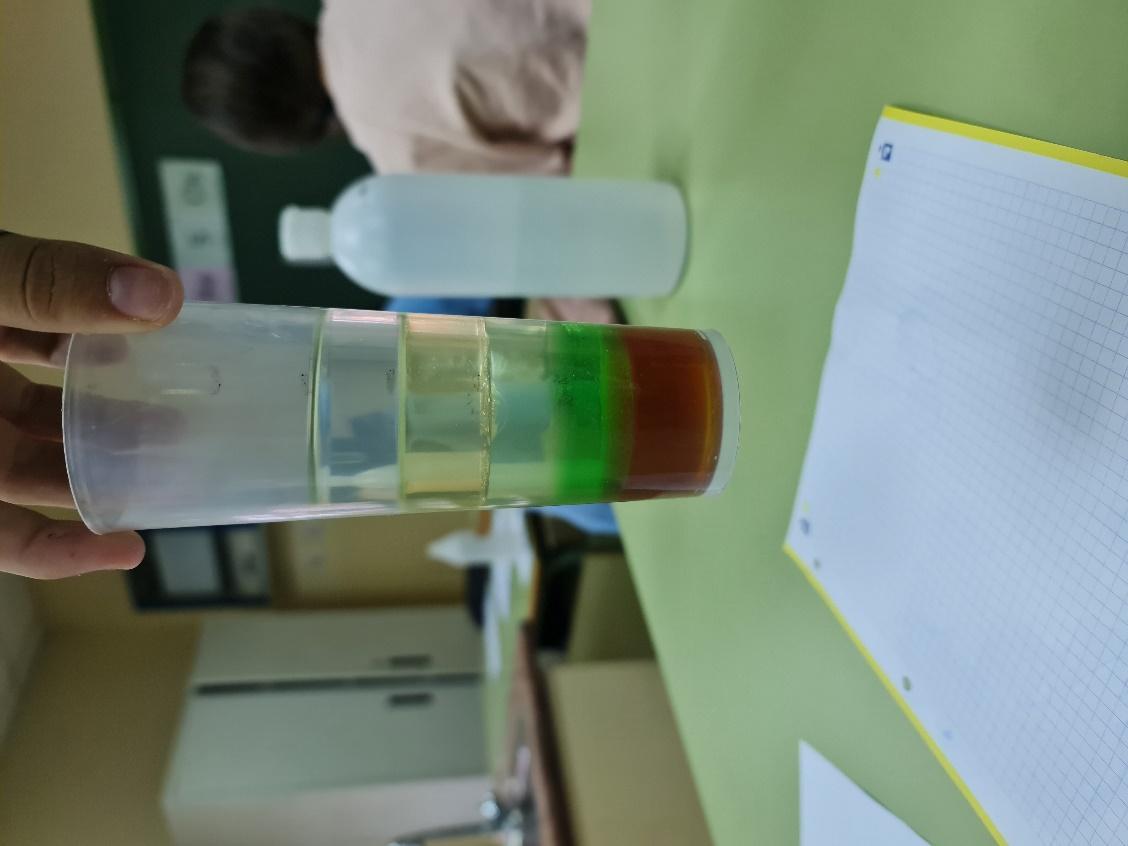In November, we went to the laboratory with the students to study density.
Density is a specific property of matter that allows us to identify substances. This is because each substance corresponds to a value of density. For instance, the density of water is 997 kg/m³ and the density of oil is 920 kg/m3.
To determine the density of some material it is necessary to measure its mass and volume.
Density= mass/volume
To study density with the students of 2º ESO we prepared a density column using soap, honey, water, oil, and alcohol. After the preparation of the density column the students predicted what would happen if they added some materials, like carrots and cork. Below you can see some of the density columns made by the students.

Image 1. Density column
With the students of 3º ESO we determined the density of water, a metal piece and metallic polyhedron. To this end, we measured the mass of these objects using a scale and then we measured the volume using a graduated cylinder or we calculated the volume using the formula.
Image 3. Measuring volume
Image 2 density column with different material inside.
This activity was a good experience for our students because they learned how to work in the laboratory and put into action the concepts that we studied in the classroom.
Shani Martínez, English Language Assistant:
"Working in the lab was a great experience for the students and for me. It allowed me to work with the students regarding words specific to the lab and its procedures.
We also reviewed words that they had been studying in class, such as graduated cylinder, scale, and mass. I think that this was an excellent opportunity to practice their English language skills and to advance their knowledge about density.
We will continue to work on building their laboratory vocabulary and hopefully continue to do lab reports in English to get them more comfortable with these types of activities. "














